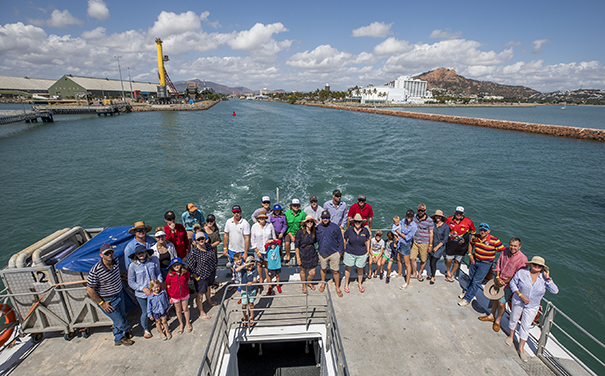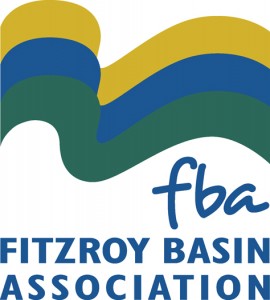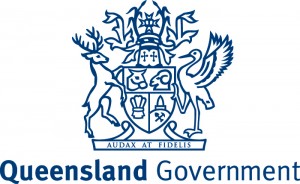Reef and Beef trip connects graziers with scientists and the reef
North Queensland graziers working to improve land condition and reduce sediment erosion had a chance to strengthen their connection with the Great Barrier Reef this week as part of the Reef and Beef Trip.
The two-day project wrap-up gave graziers an opportunity to hear the latest water quality science direct from researchers at AIMS, find out about CSIRO work to reduce levels of greenhouse gasses released by cattle, and see the reef first hand on a visit to Orpheus Island.

Tour participants head off to Orpheus Island.
The Reef and Beef trip was run by natural resource management groups NQ Dry Tropics and Fitzroy Basin Association, as part of the Saving our Soils project, funded through the Australian Government Reef Trust and supported by the Queensland Department of Environment and Science.
Under the project, 10 graziers from the Burdekin region, as well as eight graziers from the Fitzroy region, received assistance and training to improve production and profitability, while also improving land condition and reducing sediment erosion.
Water quality science was the main focus of the AIMS visit, and participants quizzed researchers about their monitoring programs and reef health.
At CSIRO, climate change was the topic, more specifically some cutting edge research demonstrating that seaweed used as a food supplement could prevent cattle releasing methane, one of the primary greenhouse gasses.
The trip to spectacular Orpheus Island offered the group a chance to get their snorkel gear on and experience the Great Barrier Reef up close – which brought home the importance of taking steps to reduce sediment runoff and help keep the waters clear.
Grazier Kale Robinson of Hillsborough Station, Ravenswood, said: “Being able to talk to the scientists first hand meant I was able to get the answers I was looking for”.
Wife Karin said: “We’ve been doing the Saving our Soils project for three years now, and it’s actually good to go and see the reef, instead of just being told about it. Our goal is to pass on our land better than we found it, to the next generation”.
Linda Anderson, Senior Field Officer – Grazing at NQ Dry Tropics said that it was important to bring together, science, landholders and government to achieve on-ground outcomes:
“NQ Dry Tropics is a broker between landholders on the ground, government, and scientists who are doing research. We are trying to merge best practice science with best practice land management and come up with solutions that work for landowners, the government and the Great Barrier Reef”, Ms Anderson said.
Barbara Robson, Principal Research Scientist at AIMS said: ”It’s fantastic to have graziers come and meet us at AIMS, see our facilities and hear about our research. Unless we have conversations we’re not going to understand each other and get the message across about the research we are doing and why it matters.
Main photo: Kale and Karin Robinson and family, with NQ Dry Tropics’ Linda Anderson.



